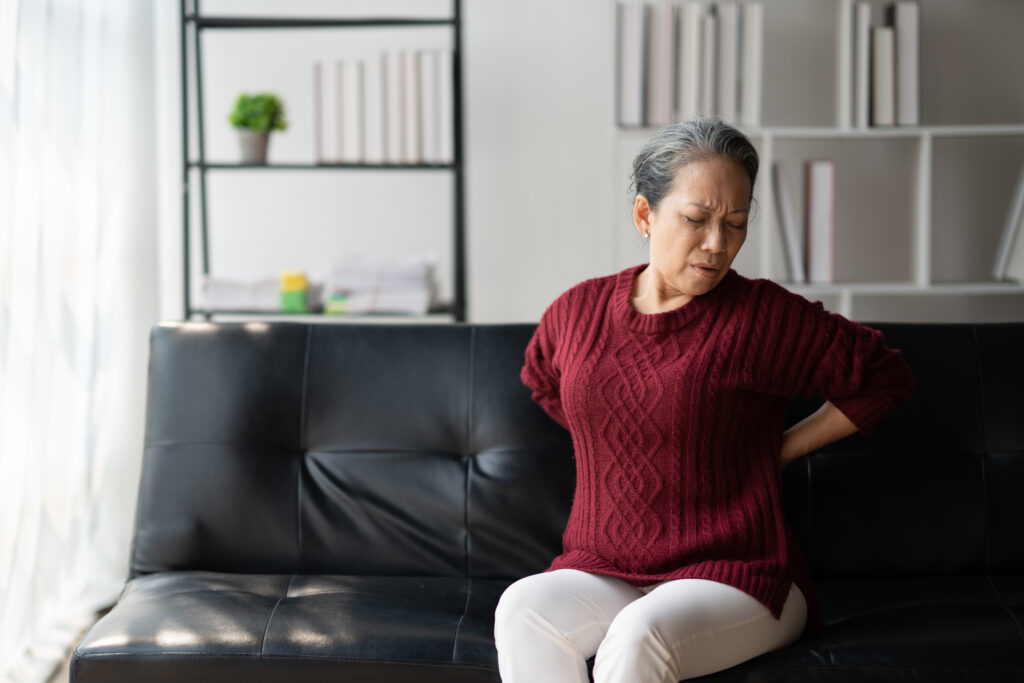The human spine is a complex and vital structure that provides support and flexibility to the body. However, various conditions can affect the spine, leading to discomfort and, in some cases, severe pain. One such condition is retrolisthesis, a displacement of the vertebrae that can occur in the lower back or neck. Dr. Andrew Strauss analyzes the details of retrolisthesis, exploring its causes, symptoms, diagnosis, and potential treatment options.
Understanding Retrolisthesis
Retrolisthesis is characterized by the backward slippage of one vertebra relative to the one below it. This displacement typically occurs in the lower back or neck, with the lower back being more susceptible. This condition is less commonly observed in the middle back, primarily due to the degenerative changes that naturally occur in the spine.
The mechanism involves a slackness in the ligaments supporting the spine. This laxity allows one vertebra to fall backward against the next one, resulting in the displacement that gives rise to the term “retro” or back.
Causes of Retrolisthesis
Retrolisthesis can be attributed to various factors, with degenerative changes in the spine being a common cause. As the spine undergoes wear and tear over time, the ligaments may lose their elasticity, contributing to the slackness that facilitates the backward slippage.
In extreme cases, retrolisthesis can also be a consequence of fractures in the back of the spine. A fracture can disrupt the normal alignment of the vertebrae, leading to instability and potential backward movement of the affected vertebra.
Symptoms of Retrolisthesis
Identifying retrolisthesis can be challenging as it may not always present with noticeable symptoms. However, when symptoms do occur, they can include:
- Back Pain: Individuals with retrolisthesis may experience persistent back pain, which can range from mild to severe.
- Reduced Range of Motion: The backward slippage of vertebrae can limit the range of motion in the affected area, leading to stiffness and discomfort.
- Nerve Compression: In some cases, retrolisthesis can compress spinal nerves, causing pain, numbness, or tingling sensations that radiate into the legs or arms, depending on the location of the displacement.
Diagnosis of Retrolisthesis
Accurate diagnosis of retrolisthesis involves a comprehensive examination by a healthcare professional. This typically includes:
- Medical History: Understanding the patient’s medical history, including any previous injuries or conditions, helps in assessing potential risk factors for retrolisthesis.
- Physical Examination: A thorough physical examination allows healthcare providers to assess the range of motion, identify areas of tenderness, and check for any signs of neurological symptoms.
- Imaging Studies: X-rays, CT scans, or MRI scans may be ordered to visualize the spine and confirm the presence and extent of retrolisthesis. These imaging studies provide detailed information about the alignment of the vertebrae and any associated structural abnormalities.
Treatment Options for Retrolisthesis
The choice of treatment for retrolisthesis depends on the severity of the condition, the presence of symptoms, and individual patient factors. Common treatment options include:
Non-Surgical Approaches:
a. Physical Therapy: Targeted exercises and stretches prescribed by a physical therapist can help improve spinal stability, reduce pain, and enhance overall function.
b. Pain Management: Over-the-counter or prescription medications may be recommended to manage pain and inflammation associated with retrolisthesis.
Surgical Interventions:
a.Spinal Fusion: In cases of severe retrolisthesis with instability, spinal fusion surgery may be considered. This procedure involves joining two or more vertebrae together to stabilize the spine.
b. Laminectomy: If nerve compression is a significant issue, a laminectomy may be performed to relieve pressure on the spinal nerves by removing a portion of the vertebral bone.
Preventing and Managing Retrolisthesis
While some risk factors for retrolisthesis, such as age-related degeneration, cannot be controlled, certain lifestyle modifications and preventive measures can be beneficial:
- Maintain a Healthy Weight: Excess body weight can contribute to spinal stress. Maintaining a healthy weight through diet and exercise can help reduce the risk of degenerative changes in the spine.
- Regular Exercise: Engaging in regular physical activity, including strength training and flexibility exercises, can support spinal health and reduce the likelihood of developing retrolisthesis.
- Proper Body Mechanics: Practicing good posture and body mechanics can prevent excessive strain on the spine and reduce the risk of injuries that could lead to retrolisthesis.
Conclusion
Retrolisthesis, or the backward slippage of vertebrae, is a condition that can affect the lower back or neck, causing pain and discomfort. While it is often associated with degenerative changes in the spine, fractures can also contribute to its development. Early diagnosis and appropriate treatment, whether through non-surgical approaches or, in severe cases, surgical interventions, are crucial for managing symptoms and preventing further complications.
Individuals experiencing back pain or related symptoms should seek prompt medical attention to undergo a thorough evaluation. With advancements in medical care and a comprehensive understanding of spinal conditions, healthcare professionals can tailor treatment plans to address the unique needs of each patient, promoting improved spinal health and overall well-being.
Also read: Can I do Pilates with Scoliosis?
